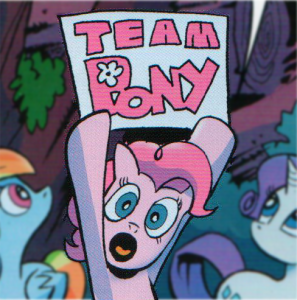 She was very recently on the receiving end of the “Spotlight On” treatment at the Long Beach (CA) Comic Expo. And every time there is a decent-sized con in one corner of our national corral or another you can count on her to be invited to present on a panel or three. Yet I don’t know that the “cool kids” of the comics world (I’m not claiming to be among that crowd) give her the credit she deserves. So in my own meager way I want to write a small paean of praise to Katie Cook — and her frequent artist collaborator Andy Price. This is the creative team behind many noteworthy issues of… Yes, I’m just going to say it. My Little Pony: Friendship is Magic.
She was very recently on the receiving end of the “Spotlight On” treatment at the Long Beach (CA) Comic Expo. And every time there is a decent-sized con in one corner of our national corral or another you can count on her to be invited to present on a panel or three. Yet I don’t know that the “cool kids” of the comics world (I’m not claiming to be among that crowd) give her the credit she deserves. So in my own meager way I want to write a small paean of praise to Katie Cook — and her frequent artist collaborator Andy Price. This is the creative team behind many noteworthy issues of… Yes, I’m just going to say it. My Little Pony: Friendship is Magic.
Something I came to appreciate in the course of doing the research for The Comic Book Story of Beer was the fact that some of the most talented, most technically accomplished brewers in America make some of the least sexy, least hip beer in America. They are working for the Big Guys. And they are very, very good at their jobs: the job of creating a beverage that enormous numbers of people want to drink. Among other challenges, these brewers are tasked with producing suds that reliably reproduce an iconic brand’s familiar taste, mouthfeel, nose, and body. They have to do this year in and year out, all while working with grain and hops that vary from season to season, farm to farm, and region to region.
Katie Price is to mainstream comics what those brewers are to beer.
IDW Publishing, which licenses My Little Pony from the Hasbro toy company, commands a major part of the comics market share through similar product lines: Teenage Mutant Ninja Turtles, Star Trek, Transformers, etc. Great googly moogly, these are juggernaut pop culture brands. Household names. Comics editions of these licensed properties would probably sell okay no matter what creative team was churning them out. So long as those adaptations weren’t, you know, transparently dismal.
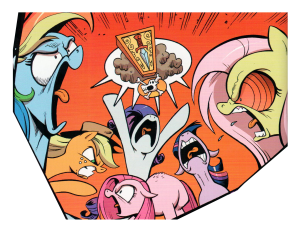 I am the father of two little girls, 4 and 3. If I want to spend the odd half hour here and there doing a little (as the MBAs call it) due diligence at a comic book retailer, there has got to be some inducement for these kids to play along. My Little Pony has become this inducement. On a lark, I brought home an issue after a signing in Florida. This was my girls’ first comic book. They were besotted immediately. And so since this series has become a fixture in their reading firmament, it has by extension become one of mine as well.
I am the father of two little girls, 4 and 3. If I want to spend the odd half hour here and there doing a little (as the MBAs call it) due diligence at a comic book retailer, there has got to be some inducement for these kids to play along. My Little Pony has become this inducement. On a lark, I brought home an issue after a signing in Florida. This was my girls’ first comic book. They were besotted immediately. And so since this series has become a fixture in their reading firmament, it has by extension become one of mine as well.
Any even meagerly discerning consumer of mass culture might be forgiven for instantly dismissing My Little Pony as a cynical exercise in profiteering: comics that sell toys that sell a TV show that sells toys. But Katie Cook’s and Andy Price’s adventures with Twilight Sparkle and Rainbow Dash and the gang decidedly and winningly transcend such an evaluation. This cannot be said for a whole range of other characters and shows my daughters respond to and have varying degrees of affection for, like Strawberry Shortcake, Bubble Guppies, Disney’s fairies, and so on.
Just flip through a My Little Pony: Friendship is Magic issue like #27, “The Root of the Problem.” I mean, we’re not dealing with exceptionally sophisticated storytelling, prose, or themes for young people here. But what Cook and Price deliver is fun, creative, and more than anything else — and this is what I really wish to give them credit for — a robust and deft use of the comics medium.
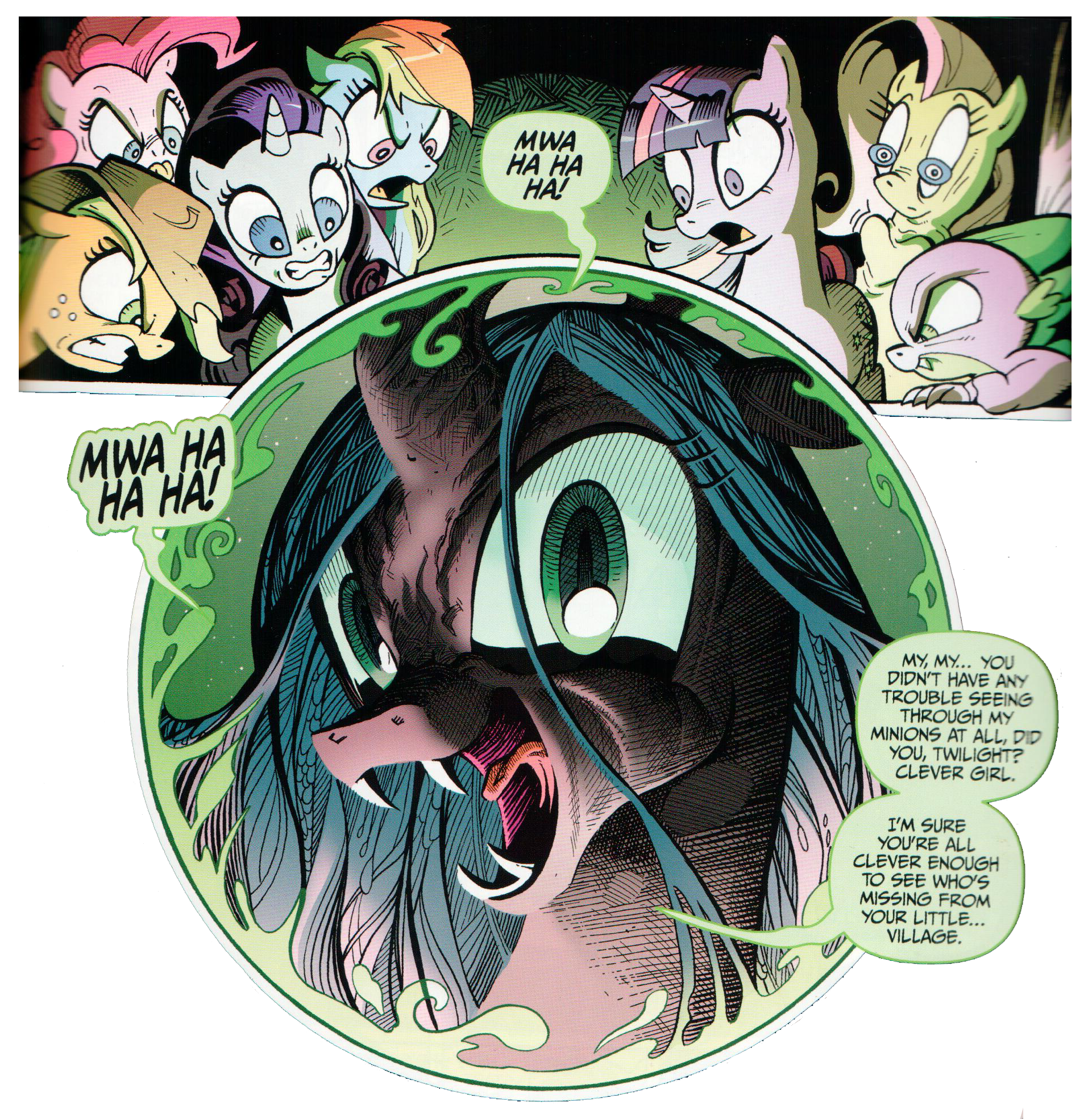 Every image scintillates with color (or has a damn good reason why not to). The flow across the page is animated and seamless. The variability in panel size, shape, and structure keeps you on your toes. Compositions often smashingly employ the “z axis” — that is to say, use perspectives that compel the human eye to perceive depth in a technically 2D image. The lettering elements are clear, quirky, and run a gamut of visual and “auditory” gimmicks. The pacing of their stories achieves an impressive balance as well. Cook and Price manage a steady forward momentum while also delivering a significant amount of detail.
Every image scintillates with color (or has a damn good reason why not to). The flow across the page is animated and seamless. The variability in panel size, shape, and structure keeps you on your toes. Compositions often smashingly employ the “z axis” — that is to say, use perspectives that compel the human eye to perceive depth in a technically 2D image. The lettering elements are clear, quirky, and run a gamut of visual and “auditory” gimmicks. The pacing of their stories achieves an impressive balance as well. Cook and Price manage a steady forward momentum while also delivering a significant amount of detail.
And what I find myself taking particular pleasure in is the plasticity of the character forms. The ponies sometimes alter shape according to their moods. Monsters and other fantastical elements are whimsically conceived and beautifully executed — like some evil, giant Cockney spiders in a recent outing.
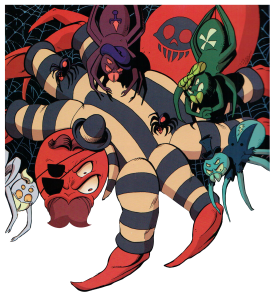 The fullness and diversity of the facial expressions just knock me out, too. Cook and Price are often cramming six different characters — all with distinct personalities — into a single panel. When these characters have to respond to something, the creators capably articulate a whole gamut of organic expressions. This alone is something that, in the context of an unfolding narrative, only the comics medium can do particularly well. In a film or stage play, the action would need to pause in order to afford you the opportunity to consider such a glut of nonverbal information. Such a pause would be supremely awkward. And it would be in prose, too. Just imagine devoting all the page space required to describe how six characters look or hold themselves story beat by story beat, line of dialogue by line of dialogue.
The fullness and diversity of the facial expressions just knock me out, too. Cook and Price are often cramming six different characters — all with distinct personalities — into a single panel. When these characters have to respond to something, the creators capably articulate a whole gamut of organic expressions. This alone is something that, in the context of an unfolding narrative, only the comics medium can do particularly well. In a film or stage play, the action would need to pause in order to afford you the opportunity to consider such a glut of nonverbal information. Such a pause would be supremely awkward. And it would be in prose, too. Just imagine devoting all the page space required to describe how six characters look or hold themselves story beat by story beat, line of dialogue by line of dialogue.
It is now one of my daughters’ favorite things to examine the faces of the equine anthropomorphs they know and love and speculate on how those characters are feeling on the inside. This leads the kids to attempt to reconcile what justify those responses. They consider the responses in light of the characters’ unique personalities, each instance becoming a little exercise in emotional logic. I sincerely believe this is helping to socialize the children in the real world. And I also believe it makes them better readers in the intellectual world for the coming time when they expand their reading material (as I hope they do) to Updike and Wharton and Shakespeare.
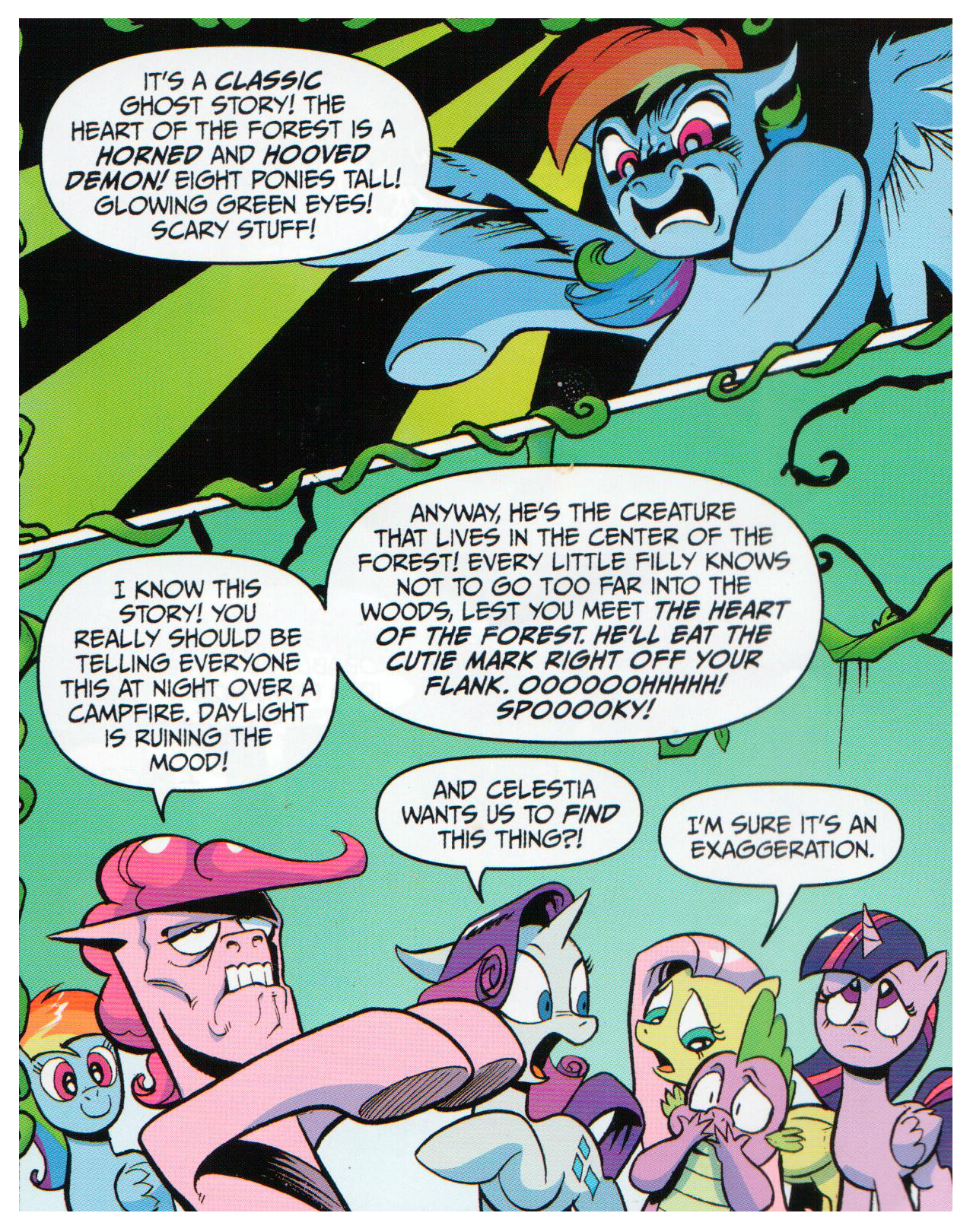 Cook and Price’s expressions also indulge in brilliant stylizations like turning pupils into daggers or bursts of fire to communicate a specific level of rage. Cook even succeeds at writing (and Cook capturing) facial expressions that I recognize, that I can decode the semiotics of, but would have a terrifically hard time describing myself, like “Pinkie Pie’s” self-consciously goofy, half-in-jest-and-half-not, and not entirely sane look of satisfaction.
Cook and Price’s expressions also indulge in brilliant stylizations like turning pupils into daggers or bursts of fire to communicate a specific level of rage. Cook even succeeds at writing (and Cook capturing) facial expressions that I recognize, that I can decode the semiotics of, but would have a terrifically hard time describing myself, like “Pinkie Pie’s” self-consciously goofy, half-in-jest-and-half-not, and not entirely sane look of satisfaction.
These elements are truly gratifying for a man who is generally, but not universally, disposed to sitting and reading to toddlers for considerable stretches of time each day.
Last year’s The Lego Movie didn’t have to be as good as it was. I would submit that The Lego Movie created a very new and very high bar for what Hollywood must do in the future enterprise of all “branded entertainment.” Katie Cook’s treatment of the My Little Pony universe strains for that same level of quality: far, far better than it has to be. (And you definitely notice the difference when less thoughtful, less nimble-with-narrative colleagues take the reins of the series).
If Cook makes it look easy, some of that may be because she’s writing in a world where pulling out all the stops is organic and makes sense to the characters and scenarios. As a comics writer I tend to restrain myself — and wonder how I would fare if I didn’t have to.
In any event, many thanks to Katie Cook for creating hours of thrills and amusement. If Pixar and Dreamworks aren’t knocking at her door to write for them, those companies are blowing it.
